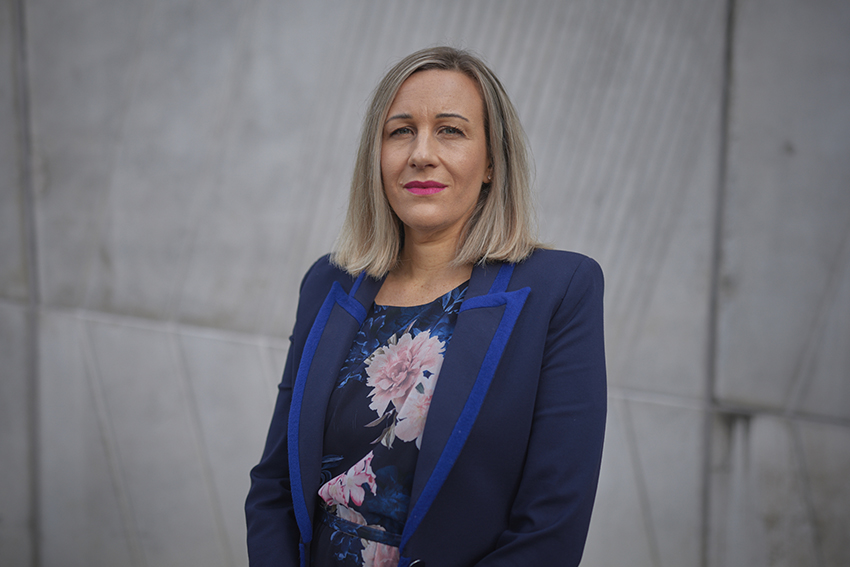Assisted dying and nursing care

“We know what the ethical issues are, but less is known about how nurses navigate their emotional responses to assisted dying in the workplace,” says Dr Margaret Sandham, Senior Lecturer of Nursing at the AUT School of Clinical Sciences.
Nurses make a vital contribution to end-of-life care, as the health professional who is often at the bedside preparing the patient and their whānau for death, and supporting whānau through bereavement.
Until now, the focus has primarily been on the moral and ethical implications of legalising assisted dying, and whether organisations will provide this service or take a stance of conscientious objection.
“Understanding the global experiences of nurses in countries where assisted dying has been legal for years could enable us to implement support strategies here in Aotearoa,” says Dr Sandham.
“We found that nurses would benefit from clear policy, psychological support and specific guidance around difficult end-of-life conversations as more countries transition to providing assisted dying services.”
Ministry of Health data, released last week, shows that 143 people had an assisted death between 7 November 2021 and 30 June 2022. These assisted deaths took place at private residences (79 percent), aged care facilities (9.1 percent), district health board facilities (7.7 percent), and hospice (4.2 percent).
Since 2021, nurses have been able to participate in assisted dying with the patient and their whānau, within tightly regulated criteria.
Dr Sandham is a registered nurse and clinical psychologist, and led an international team of nurses to author a systematic review published in the Journal of Advanced Nursing.
Project collaborators included Emma Hedgecock (Oceania Healthcare nurse practitioner), Dr Melissa Carey (University of Auckland, and University of Southern Queensland, and Dr Rebecca Jarden (University of Melbourne).
This is the first metasynthesis, integrating qualitative data from previous studies to inform new perspectives, of the lived experiences of nurses who had participated in assisted dying at any stage, from the initial request to the end-of-life.
“The nurses in our review strongly articulated the complexity and emotional burden they carried in providing the best patient care they could, alongside learning and undertaking the unfamiliar and weighty practice of assisted dying,” says Dr Sandham.
Three key themes emerged from the review:
- The importance of an orderly procedure – enabling nurses to lean on the structures of policy and be well-prepared, having the right resources and knowledge and being able to draw from the knowledge within their teams.
- The importance of a beautiful death – facilitating a meaningful patient and whānau experience and helping the patient to die in a way that they have chosen with dignity and peace.
- The importance of addressing the psychological and emotional impact – and potential existential crisis, associated with the weight and complexity of navigating assisted dying together and alone.
Recommendations for policy and practice
The need for clear policy
Researchers found that nurses valued clear policy to keep them legally, ethically and procedurally safe. They also used policy to keep themselves emotionally safe when they were overwhelmed by the magnitude of what they were undertaking.
“Clear policy should be provided by nursing governing bodies as well as the workplace and framed in a way that is enabling and supportive rather than fear-driven, which could unnecessarily discourage nurses from being involved in assisted dying,” says Dr Sandham.
The need for advanced communication skills
The review shows that nurses were at times unprepared for the ‘heavy conversations’ that came from patients requesting assisted dying. Role-playing these conversations may develop confidence and communication training may also facilitate supportive interactions within teams.
“Effective, professional communication in end-of-life care requires self-awareness and empathy, as well as the ability to articulate practical and emotional information,” says Dr Sandham.
The benefit of psychological support
While nurses did not specifically raise the issue of professional supervision, this type of support may help strengthen nurse reflexivity – the ability to examine how their emotional needs and responses might influence behaviour – when navigating complex ethical and emotional areas, such as end-of-life care.
Dr Sandham says, interdisciplinary group supervision may have the additional benefit of enhancing team cohesion in the context of assisted dying. This is especially important given the unique and existential nature of the new practice.